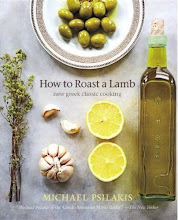Now that I know that there are dozens of tasty ways to prepare them, keeping them fresh tasting and green, I try to keep a stalk of them in my cold pantry all winter. They are easily available on a stalk all over the US at you local Fruit and Veggie market.

Brussels Sprouts on my "Martha Stewart green" French button chair
I found these interesting facts about Brussels Sprouts and I wanted to share them with you, especially if these are not your favorites. This may encourage you to give Brussels Sprouts a whirl this Winter.
15 Facts About Brussels Sprouts
1-Brussels sprouts are native to northern Europe.
2-They are part of the Brassica family of vegetables, which also includes cabbage, broccoli, kale, and collard greens.
3-They get their name from the fact that they were widely cultivated around Brussels, Belgium during the 16th century.
4-They were introduced to England and France in the 19th century.
5-According to a 2002 survey, Brussels sprouts are the most hated vegetable in Britain.
6-French settlers in Louisiana introduced Brussels sprouts to America in the 1800s.
7-Commercial production began in 1925 on the Louisiana delta.
I found these interesting facts about Brussels Sprouts and I wanted to share them with you, especially if these are not your favorites. This may encourage you to give Brussels Sprouts a whirl this Winter.
15 Facts About Brussels Sprouts
1-Brussels sprouts are native to northern Europe.
2-They are part of the Brassica family of vegetables, which also includes cabbage, broccoli, kale, and collard greens.
3-They get their name from the fact that they were widely cultivated around Brussels, Belgium during the 16th century.
4-They were introduced to England and France in the 19th century.
5-According to a 2002 survey, Brussels sprouts are the most hated vegetable in Britain.
6-French settlers in Louisiana introduced Brussels sprouts to America in the 1800s.
7-Commercial production began in 1925 on the Louisiana delta.

8-By 1939, Brussels sprouts were being produced in central California.
9-Today, almost all U.S. production of Brussels sprouts happens in California.
10-Other top Brussels sprouts producers include Canada, The Netherlands, England, and Germany.
11-Like broccoli and some other members of the Brassica family, Brussels sprouts contain something called sinigrin, a glucosinate that may prevent colon cancer according to research.
12-One cup of Brussels sprouts contains 1,122 IU of Vitamin A.
13-That same cup also contains 669 IU of beta carotene.
14-A cup of cooked Brussels sprouts contains about 60 calories.
15-1/2 cup contains 80% of the RDA of Vitamin C.
These are 15 great reasons to eat your sprouts;
one more is that each sprout has only 10 little calories…so eat up…!
 My two favorite ways to enjoy them is steamed and tossed with a lemon vinaigrette.
My two favorite ways to enjoy them is steamed and tossed with a lemon vinaigrette.Made this way they taste fresh and light.
During the cold months, I love to roast Brussels Sprouts in the oven. Cut sprouts in half after washing. Toss them with a fruity olive oil, salt and pepper and roast at 400 degrees, turning after 10 minutes until caramelized (about 15-20 minutes).
These are very sweet, pungent with out any cabbage-y flavor and pair very well with winter braised meats and that Turkey you may be cooking for you Holiday table.



























